Table of Contents
Many readers ask me which bone builder exercises I recommend for my clients. A bone builders exercise program should include two major exercise groups: cardiovascular and strength training exercises.
A bone builders exercise program helps you build bone, build muscle and leads to a better quality of life. However, there are a number of important considerations one needs to take into account before starting an exercise program. I will cover these in this blog.
This is a long and comprehensive blog article. Here is the agenda to help you navigate the content:
- Which Type of Exercise Contributes Most to Building Strong Bones?
- Bone Builders Exercise Program.
- How to Build Bone Mass.
- Strength Training and Bone Density.
- Does Improving Endurance Slow Bone Density Loss?
- Composition of the Bone and Exercise
Which Type of Exercise Contributes Most to Building Strong Bones
Two types of exercise contribute the most to building strong bones. A good bone builders exercise program will include:
- A cardiovascular program that incorporates appropriate weight bearing activities.
- A strength training program.
These two bone builders exercises have been shown to be very effective when it comes to building bone. Let me explain why those two exercise groups are part of a bone builders exercise program and how they affect bone.
The first of the two types of bone builders exercises we will cover are cardiovascular weight bearing exercises.
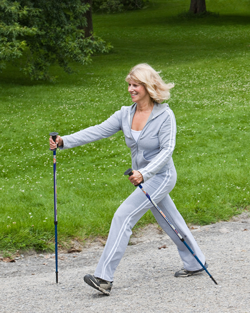
Why Weight Bearing is Important
Although we still don’t know all of the intricacies of how weight bearing affects bone at a cellular level, we do know that it is beneficial to bone and therefore we recommend aerobic or cardiovascular exercises with weight bearing.
If you do a strong clap or pound your foot down on the ground, you’ll feel that little vibration going through the bone. That is a weight bearing event.
That vibration is a stimulus that tells your bone: “you better shape up”.
You are telling your bones that they have to be able to handle the load that’s coming at them every step of the day, the week, the month and the year. When your bone gets that stimulus it responds to that stimulus. That’s where the cardiovascular or the weight bearing plays a role in building bone.
Choose the Weight Bearing Activities Appropriate for You
Your bone builders exercise program should include cardiovascular activities that are appropriate to your fracture risk level.
You want to make sure that the activity level you choose corresponds to your fracture risk level. In my book, Exercise for Better Bones, I describe in step-by-step detail how to choose the exercise level appropriate for you.
Weight bearing is a component of cardiovascular exercises. The weight bearing activity generated through the exercises cause vibrations that stimulate your bone. The bone building process kicks in because you are telling your bone that it needs to learn how to handle the load.
The Role of Strength Training
The second type of bone builders exercises is strength training. Strength training builds muscle and makes you stronger.
The process of strength training also stimulates the bone. When you strength train, muscles are pulled in different directions. This pulling process, in turn, pulls on the bones attached to those muscles and stimulates them (in much the same way as they are stimulated by weight bearing activities.)
When we strength train we use a weight and use our own body weight to load against that weight. In other words, we are asking our muscles to react.
As our muscles react to the movement of the weight they tighten up and in tightening up, they pull on the bone. The action of the muscle pulling on the bone is another form of stimulus for that bone and again you are telling your bones that they “better shape up”.
Whether you are doing it through the loading or through the muscle pull, you want to, as much as possible, target as many muscles and bones in your body so that you are staying strong throughout your skeleton.
Unlike medication and pharmaceuticals, exercise only has positive side effects.
In summary, the key thing you want to do in your bone builders exercise program is target as many muscles (and bones) as possible when you strength train.
Additional Benefits
Study after study shows that not only does the cardiovascular and strength training improve your bone health by the effects that I had mentioned, but also reduces your risks for falls, makes you feel so much stronger, helps your heart, improves your quality of life, and reduces your pain.
Even if you are taking osteoporosis medications, you should follow a bone builders exercise program with weight bearing and strength training activities.
Conclusion
Exercise does build bone. But you need to make sure that your program is comprehensive and includes cardiovascular activities and strength training. The MelioGuide Exercise for Better Bones Program is an online source for people who do not have (or cannot afford) direct access to a trained professional.
Bone Builders Exercise Program
The discussion above should answer your question: which type of exercise contributes most to building strong bones and why these exercises should be the foundation of a bone builders exercise program.
Let’s do a quick summary of those findings and add a few important points you need to consider when choosing an exercise program.
First, a bone builders exercise program has to have exercises that challenge your bones and the best exercises for that are:
- Cardiovascular exercises and activities that incorporate weight bearing.
- Strength training.
Second, the two types of bone builders exercises listed above need to be appropriate to your level and capabilities and they need to have a mix of exercises that create novel movements, challenge bones throughout your body, are safe, and are fun so that you keep engaged in your exercise program.
Third, an osteoporosis exercise program includes exercises that include not only bone builders exercises (that build bone) but also exercises that improve balance, flexibility, and posture.
Fourth, you need to make sure that the bone builders exercise program you follow does not include osteoporosis exercise contraindications.
Fifth, you need a reliable source for an exercise program that incorporates all of these elements including bone builders exercises. One source is my Exercise for Better Bones program, another is my exercise video, Stronger Bones, Stronger Body and finally you can work directly with me for an Osteoporosis Physiotherapy Treatment program.
In the next section we will talk about how to build bone mass.
Exercise Recommendations for Osteoporosis
Exercise is an essential ingredient to bone health. If you have osteoporosis, therapeutic exercise needs to be part of your osteoporosis treatment program.
But what exercises should you do and which ones should you avoid? What exercises build bone and which ones reduce your chance of a fracture? Is Yoga good for your bones? Who should you trust when it comes to exercises for osteoporosis?
A great resource on exercise and osteoporosis is my free, seven day email course called Exercise Recommendations for Osteoporosis. After you provide your email address, you will receive seven consecutive online educational videos on bone health — one lesson each day. You can look at the videos at anytime and as often as you like.
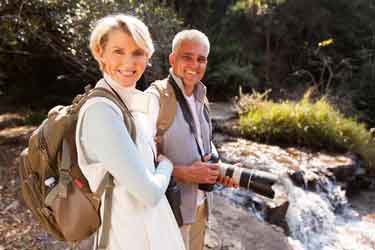
I cover important topics related to osteoporosis exercise including:
- Can exercise reverse osteoporosis?
- Stop the stoop — how to avoid kyphosis and rounded shoulders.
- Key components of an osteoporosis exercise program.
- Key principles of bone building.
- Exercises you should avoid if you have osteoporosis.
- Yoga and osteoporosis — should you practice yoga if you have osteoporosis?
- Core strength and osteoporosis — why is core strength important if you have osteoporosis?
Enter your email address and I will start you on this free course. I do not SPAM or share your email address (or any information) with third parties. You can unsubscribe from my mail list at any time.
How to Build Bone Mass
A recent systematic review addresses several significant questions: Is there relationship between bone mass and exercise in older adults, why is important to keep active as you age, and how to build bone mass.
A systematic review is a research study that involves a review of a large body of research articles and studies on a specific topic and draws appropriate conclusions.
In this systematic review, the researchers take all the research articles that talk about individuals with osteoporosis, osteopenia, and at risk for low bone mass, and determine what type of training best addresses how to bone mass. The researchers look at the conclusions of all these studies and publish the results to the scientific and medical community.
Bone Mass and Exercise
The systematic review by Gomez-Cabello and associates (1) demonstrates that there is a beneficial relationship between bone mass and exercise, that older adults need to keep active in their advanced years to build bone mass, and that two main categories of bone building exercises are essential to build bone mass. The two categories of bone builders exercises are
- Cardiovascular weight bearing exercises.
- Strength training exercises.
This review supports the Exercise for Better Bones program.
Weight Bearing and Cardiovascular Exercise
The review concluded that comfortable osteoporosis walking (for more on walking and osteoporosis, see my article Is Walking Good for Osteoporosis) is not enough to stimulate bone mass.
However, when we increase the pace (i.e., running, climbing or brisk movement) or make it multi-component (i.e, nordic walking), the benefit is noticeable. Depending on activity level, the increase in bone mass ranged from 1% to 6%.
What is even more noticeable was that when the review compared the active people with the control group (of inactive people) the differences were significant. The people in the control group (who were inactive) lost bone mass of up to 5%.
Over time this difference between the groups demonstrates that cardiovascular weight bearing exercises are extremely beneficial – in fact, they are essential.
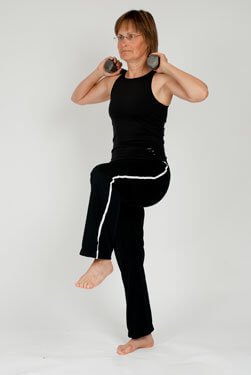
Strength Training
The review demonstrated that strength training allowed people to build bone mass not only at the hip but also at the spine. Further, like the experience with people who did weight bearing exercises, the benefits to people who did strength training compared to those who did none was significant.
Most of the studies in the systematic review used a DEXA — which is the standard way of measuring bone density.
But the key thing here is that when the researchers looked at studies that used other forms of bone measurement, such as peripheral quantitative computer tomography (PQCT), they saw changes in bone mass and bone quality that are not apparent in DEXA tests. Thats an important data point because bone quality is a key component of bone health.
As I talked about earlier in bone builders exercises, strength training with enough intensity is able to build bone — not in huge numbers, but it made the difference between not losing bone in huge numbers and gaining bone mass. Here is the important takeaway: people were actually able to not only maintain but continue to build bone well into their 60s and 70s and this is really exciting to see.
People who followed a strength training program improved bone mass. Those that did not, lost bone mass.
Fall Prevention and the Benefit of Balance
The review also showed that weight bearing and strength training carried over to improved balance – a key part of fall prevention and fracture risk reduction.
Conclusion
One other thing to bring up here is that the review looked at studies involving both men and women.
Women, we know, they lose a lot of bone when they hit menopause, but they will continue to lose bone well into their 60s, 70s, and 80s at a less of a quick rate than they did during menopause.
Men, however, will lose bone at 2 to 4 times the rate in their 70’s when compared to the rate of bone loss in their 60’s. They will start losing bone even as early as their 40s if they’re not very active, and they will continue losing bone.
The review showed that both women and men lose bone mass (at different rates and at different times) if they are inactive. It also showed that both sexes can gain bone mass – even in their 60s and 70s.
The message is clear. Be active as early as you can. Stay active. Incorporate both strength training and weight bearing into your exercise program.
When you’re looking at an active, pleasant retirement, that really is lost if you’re having to deal with multiple fractures. So we really encourage you to, if you’re older yourself, to embark upon a safe strength training program that incorporates bone builders exercises.
Strength Training and Bone Density
What is the relationship between strength training and bone density? Can body building build bone and muscle?
When most people hear the term body building, large men with thick Austrian accents and the ugly parts of the body building world – including the steroid use – frequently come to mind. This is understandable given the world of competitive sports these days. However, are there techniques from body-building that you can blend into your exercise program to make it more effective?
Can Body Building Build Bone and Muscle?
Last year I decided to try my hand (actually my body) at body building (without the steroids and other bad bits) to see how far I could go. I learned some important lessons that I would like to share with you.
Before I get into the specific lessons learned, I should mention a study I came across related to strength training and bone health.
Relationship Between Strength Training and Bone Density
A new study published in the January 2013 edition of the Journal of Strength and Conditioning Research titled “Maximal strength training in postmenopausal women with osteoporosis or osteopenia” (2) studied the effects of strength training on the bone health of a group of postmenopausal women.
The study found that there was a significant increase in bone density (specifically around the spine and the hips) in the women with osteoporosis and osteopenia when they followed a maximum strength training protocol for a twelve week period.
If you want to build strong bones, you should follow an exercise program that requires consistent, regular strength training that involves a maximum effort.
Do you need to become a body builder? Probably not, but body builders that follow a natural program (one that does not include steroids or pharmaceuticals) build strong muscle and bone.
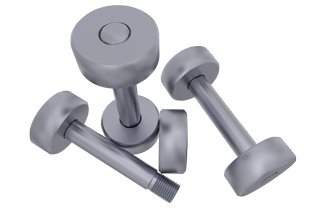
Body Building Lessons for Strength Training and Bone Density
What can you learn from body builders? I believe that there are three lessons we can all take from this world.
Your Diet is Important
Your diet plays an important role in building muscle and bone. Body builders need protein as they stress their muscles. However, protein is acidic. Use alkaline foods to balance the effects of the acidic foods. This is one reason the body builder diet also includes an abundance of vegetables.
Supplement with Creatine
Body builders often consume creatine after a strenuous workout. Studies show that older adults who took creatine had a strength increase of 20 to 25% compared to older adults who did not take creatine post workout. Further, the older adults who took creatine had a better recovery experience.
Maximize Strength Training
Your bones and muscles will experience the greatest benefits when choose a weight (if the exercise includes a weight) that fatigues your targeted muscles within the range of reps listed in your exercise schedule. To learn more about sets and reps and maximizing your weights, please read my blog, Sets and Reps Explained.
But make sure you keep good form and posture when you do your exercise program. You do not want to compromise your form as your build up your weights.
Conclusion
Body building is probably not your cup of tea but there are techniques within that training regimen that will benefit your bones and muscles.
Exercise Recommendations for Osteoporosis
Exercise is an essential ingredient to bone health. If you have osteoporosis, therapeutic exercise needs to be part of your osteoporosis treatment program.
But what exercises should you do and which ones should you avoid? What exercises build bone and which ones reduce your chance of a fracture? Is Yoga good for your bones? Who should you trust when it comes to exercises for osteoporosis?
A great resource on exercise and osteoporosis is my free, seven day email course called Exercise Recommendations for Osteoporosis. After you provide your email address, you will receive seven consecutive online educational videos on bone health — one lesson each day. You can look at the videos at anytime and as often as you like.

I cover important topics related to osteoporosis exercise including:
- Can exercise reverse osteoporosis?
- Stop the stoop — how to avoid kyphosis and rounded shoulders.
- Key components of an osteoporosis exercise program.
- Key principles of bone building.
- Exercises you should avoid if you have osteoporosis.
- Yoga and osteoporosis — should you practice yoga if you have osteoporosis?
- Core strength and osteoporosis — why is core strength important if you have osteoporosis?
Enter your email address and I will start you on this free course. I do not SPAM or share your email address (or any information) with third parties. You can unsubscribe from my mail list at any time.
Does Improving Endurance Slow Bone Density Loss?
Does improving endurance slow bone density loss? I was approached by a women who was recently diagnosed with osteoporosis. She was very active and did endurance activities including lifting firewood around her house.
I had to point out to her that endurance activities do not slow bone density loss or build bone. To build bone she needs to increase the load on her bones and to do that she needs to incorporate strength exercises into her bone builders exercise program.
Endurance and Bone Density Loss
Today I’m going to share with you a story that came about when I was invited to Upstate New York to give a talk.
During the talk a woman approached me (I sensed she was frustrated after having been diagnosed with osteoporosis) and said: “I lift a whole lot of firewood and lifting a lot of firewood should slow bone density loss and build bone.”
Lifting a whole lot of firewood is a great endurance activity. But activities that involve endurance do not slow bone density loss and do not builds bone.
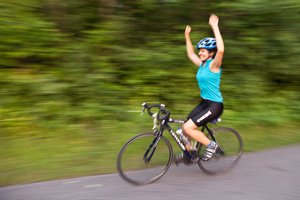
Strength Training
To build bone you need bone builders exercises like strength training. You need the load, so you need to be piling up a lot of firewood so that you could only lift ten piles of firewood to make that a strength activity.
I would not recommend that you lift ten big, heavy piles because that is going to be a very awkward load. What I am saying is that you should be looking at your strength training as an opportunity to have the lifestyle that you want to have.
I have many clients who run through the airport and are exhausted because they are not strength training. They are allowing endurance activities to be their exercise and not including bone builders exercises like strength training and weight bearing exercises.
I encourage you to devote time each day to strength training. You need the muscles to be working hard so that the muscles are pulling on the bone. The bone needs to be stimulated to build and that’s the type of activity that builds bone.
Composition of the Bone and Exercise
Researchers now know more about how exercise affects composition of the bone. New studies indicates that the frequency of exercise can affect whether or not stem cells, located in your bone marrow, become bone cells or fat cells. This means that if you exercise frequently you can positively affect the quality, density and strength of your bones.
Researchers are also finding that frequent movement throughout your day (and conversely, avoiding extended sedentary periods) can have significant health benefits. Further, the younger you start exercising, the better for your bones.
How Exercise Affects Composition of the Bone
A study published at the end of 2010 indicated that the amount of bone marrow fat is inversely related to the amount of cortical bone (the good hard bone that resists fracture) in the femur. This relationship appeared to hold true regardless of age – some research subjects were in their 20s while others were in their 50s.
A different research project led by Dr. Janet Rubin, a professor of medicine at the University of North Carolina (3), has shown that mice who were exposed to mechanical stimulation (much like the forces on bone caused by walking) developed more bone cells than mice who were idle.
Frequency of Exercise Has Its Benefits for Your Bones (and Your Muscles)
Exposing the mice to two bouts of mechanical stimulation had a greater effect than just one long bout of exercise. Allowing a three-hour rest, compared to a one hour rest, between mechanical bouts of stimulation had a stronger effect on stimulating the cells to convert into bone rather than fat cells. Frequency of stimulation was a more powerful stimulant than load or time.
According to Dr. Rubin: “If you don’t want fatty bone marrow and unhealthy bones, consider breaking up moderate-intensity workouts into several sessions interspersed throughout the day.”
Apparently, the same rule applies to muscles and your overall health. Research is showing that frequent workouts or activity throughout the day is much more beneficial to you than sitting idle at a computer screen and having one long workout.
These research results are quite compelling – at least for the researchers. Like Dr. Rubin, I have modified my exercise routine so that I works out more frequently. Instead of working out once a day for one hour, I go out for a morning run or brisk walk. Later in the day, I do a 30 minute strength training or TaiChi and Yoga routine.
Why Are These Studies Important to You?
- If you want strong bones that resist fracture through life, you want to start young and encourage stem cells towards bone building rather than fat building.
- It appears that short bouts of exercise may be as or more important than how hard you push.
References
- Effects of training on bone mass in older adults: a systematic review. Gomez-Cabello, et al. Sports Medicine. April, 2012.
- Maximal strength training in postmenopausal women with osteoporosis or osteopenia. Mosti MP, et al. Journal of Strength and Conditioning Research. October, 2013.
- Mechanical Signals as a Non-Invasive Means to Influence Mesenchymal Stem Cell Fate, Promoting Bone and Suppressing the Fat Phenotype. Rubin J, et al. Bonekey Osteovision. 2009.
Most Important Articles
This is the first in a series of articles I have identified as the most important osteoporosis articles.

Comments
December 17, 2015 at 4:00pm
Stephen James
Hello. Are you going to be offering the online assessment again. My physiotherapist has been trained in the Melio Guide program and highly recommends the online component but it has been take off the website.
Thank you.
December 17, 2015 at 4:06pm
Richard Martin replies
Hi Stephen: We put our program assessment in our new version of the book. The book is available on Amazon:
http://www.amazon.com/Exercise-Better-Bones-Effective-Osteoporosis/dp/0991912543/
We also recommend the FRAX assessment tool. Here is Margaret's blog article:
http://melioguide.com/physical-therapy-continuing-education/frax-tutorial-for-health-professionals/
December 8, 2020 at 3:57pm
Dottie
I have been attending a group bone builders with trained instructors in Vermont. Now in Florida for 6 months I am looking for a group to do bone builders exercises with.
December 12, 2020 at 6:41am
Margaret Martin replies
Hi Dottie, Unfortunately, I do not have any information on the Bone Builders Exercise program in Florida. When I do a google search, the YMCA comes up as a location where they have been held in Florida in the past. You may want to check with them. Having said that, here in Ottawa, Canada all group classes have been suspended due to Covid-19. I know the situation is much worse in Florida than Vermont and so I encourage you to take care, stay safe, and consider doing one of my on-line exercise videos. You can find them by clicking on the link below:
http://melioguide.com/products/videos/
Wishing you all the best,
Margaret
August 9, 2021 at 7:37pm
Alicia
Hi. I am looking for an instructor to start a bone builders class at my assisted living site in Conne ticut. Do you have anyone that you can refer me to.
August 9, 2021 at 8:32pm
Richard Martin replies
Hi Alicia. Sorry I cannot think of a qualified individual in Connecticut.